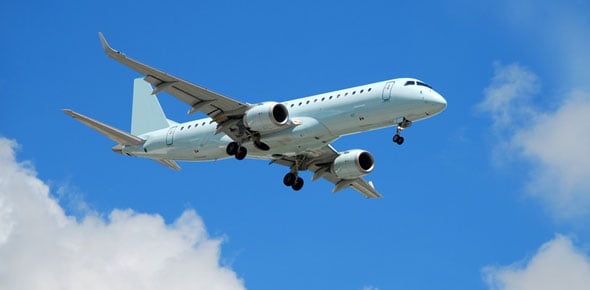If two WOW sensors on the same landing gear leg fail, the PSEMs will...
The _____________________ has the ability to stop the airplane if a...
To operate in handwheel steering mode the handwheel steering must be...
Touchdown protection prevents the airplane from touching down with the...
Positioning the landing gear lever to the UP position releases...
Whenever the PSEM computes a signal of weight on wheels the SPDA...
A dedicated device inside the nose landing gear bay stops the...
With the SLAT/FLAP lever in the 0, 1, 2, 3 or 4 position the...
To engage the nose wheel steering system:
The maximum steering angle of the rudder pedal is ___ .
When the weight on wheels signal is no longer valid the mechanical...
Anti skid protection is __________ for the emergency/parking brake...
The Emergency/Parking brake has no ...
Upon releasing the handwheel steering, the system reverts to ...
The system logic compares wheel speed signals between the left and the...
The fusible plugs are pins attached to the wheels, which melt...
How many weight-on-wheels (WOW) proximity sensors are installed on...
During normal operation the BCM provides protection from skidding and...
Automatic wheel braking prevents the ____________________ from...
Regarding the AIR GROUND POSITIONING SYSTEM, what does...
The red DN label inside a red circle and the red UP label inside a red...
The amber cross-hatched box indicates that the respective landing gear...
How many PSEM are installed in the plane?
The emergency/parking brake system has pressure accumulators isolated...
After a power up, the first steering engagement must be performed with...
The free wheel mode is automatically selected when:
The airplane nose landing gear has steer-by-wire control powered by...
Each landing gear has ...
The red cross-hatched box indicates ...
Landing and RTO modes will be disarmed if ...
The brake system has ___ brake control modules (BCM).
Each PSEM monitors the total of ____ weight-on-wheels (WOW)...
The Emergency/Parking brake is operated through a handle located on...
For wheel speeds below ___ , the anti skid protection is deactivated,...
The minimum runway width for a 180º turn is ...
In the free wheel mode, the airplane steering can be carried out by...
For landing mode, the main landing gear WOW must indicate the airplane...
The aural message _______________ is activated when "armed" condition...
In the event of dual radio altimeter failure, the warning inhibition...
The autobrake system can only be armed if the normal brake system is...
The steering system can be disengaged reverting to free wheel by means...
Locked wheel protection is active anytime on ground and at wheel...
If for any reason the shock absorber of any landing gear does not...
Check the inputs that uses the "LANDING GEAR" aural logic.
Hydraulic pressure is necessary for retraction and normal extension of...
DISAGREEMENT: the indication changes from its previous color to red...
The downlock release button ____________ bypasses the system...
With the SLAT/FLAP lever in a landing position (5 or FULL) the aural...
In the event of a failure of the landing gear lever, landing gear...
















